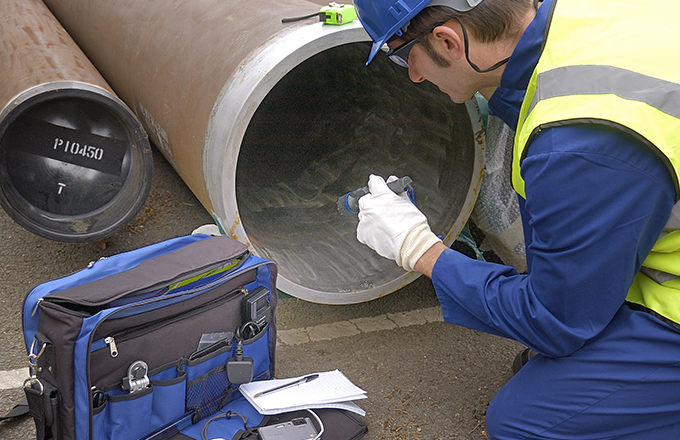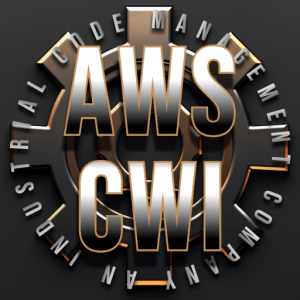The Ultimate Checklist for Welding Inspection Gilbert Arizona: Ensuring Safety and Precision
The Ultimate Checklist for Welding Inspection Gilbert Arizona: Ensuring Safety and Precision
Blog Article
Exploring the Relevance of Welding Evaluation in Industrial Applications: Guarding Against Failings and Enhancing Longevity
Welding inspection serves as a crucial line of defense in industrial applications, guaranteeing the structural integrity and reliability of welded components. By methodically recognizing issues such as porosity and insufficient combination, assessments not only avoid failures but also expand the life-span of crucial properties.
Duty of Welding Assessment
Welding assessment works as a vital protect in industrial applications, making certain that bonded frameworks meet defined criteria of high quality and security. This process entails a methodical assessment of welds to verify their honesty, toughness, and compliance with established codes and specs. The function of welding assessment is multifaceted, including both visual evaluations and non-destructive testing methods, which might include ultrasonic, radiographic, or magnetic fragment screening.
Efficient welding assessment recognizes potential concerns early, alleviating the risk of tragic failures that can arise from poor welds. By guaranteeing that welds are executed according to create specifications, assessors contribute to the total structural integrity and longevity of parts in essential applications, such as pressure vessels, pipelines, and architectural frameworks.

Usual Welding Issues

One of the most widespread issues is porosity, identified by little gas pockets trapped within the weld steel. This happens because of pollutants or incorrect shielding gas, compromising the weld's toughness. An additional considerable flaw is incomplete fusion, where the weld steel fails to bond appropriately with the base product, possibly causing structural weaknesses.

Fractures can also create throughout or after the welding process, often credited to thermal anxieties or improper air conditioning rates. In addition, damaging, where the base metal is deteriorated along the weld bead, can damage the joint and is commonly triggered by too much warm input or wrong method.
Moreover, absence of penetration happens when the weld metal does not get to the root of the joint, causing inadequate stamina. Understanding these typical defects is critical for assessors and welders alike to guarantee that bonded structures satisfy safety and security and performance criteria, ultimately stopping potential failures in commercial applications.
Benefits of Routine Examinations
Regular assessments offer as a vital guard in guaranteeing the dependability and long life of welded structures. These examinations recognize potential problems and weaknesses that might endanger the integrity of welds, enabling timely removal prior to concerns escalate. By executing a structured assessment regimen, organizations can considerably decrease the danger of tragic failings that might lead to costly downtime, equipment replacement, and even mishaps.
Additionally, routine assessments add to boosted quality assurance throughout the welding procedure. By sticking to a regular examination timetable, firms can ensure that their welding practices fulfill established top quality standards and ideal practices. This not just promotes a culture of accountability but also motivates constant renovation amongst welding workers.
Additionally, regular evaluations facilitate much better maintenance preparation. By identifying damage early, companies can purposefully arrange repair work and replacements, lessening disruption to procedures. This positive method inevitably brings about prolonged asset lifespan and boosted general productivity.
Lastly, a dedication to regular examinations can enhance a firm's credibility in the sector. Clients and stakeholders increasingly worth companies that prioritize safety and security and quality, consequently enhancing depend on and possibly resulting in raised company possibilities.
Industry Criteria and Rules
Adhering to industry requirements and regulations is an essential element of welding inspection that complements the advantages of normal evaluations. These requirements, developed by companies such as the American Welding Culture (AWS) and the American Society of Mechanical Engineers (ASME), supply a structure for ideal practices in welding processes, materials, and assessment strategies. Conformity with these regulations guarantees that welds satisfy the needed top quality and safety and security benchmarks, considerably decreasing the danger of architectural failings.
Regulative bodies like the Occupational Safety And Security and Wellness Management (OSHA) further enforce guidelines that protect workers and the environment during welding operations. By following these established standards, industries can enhance the reliability of their parts and frameworks, guaranteeing they do as planned under numerous functional conditions.
Furthermore, adherence to industry standards cultivates uniformity in top quality control, assisting in smoother interaction among stakeholders and regulatory this page agencies. This placement not just lessens obligation dangers but also boosts the reputation of companies in competitive markets. Welding Inspection Gilbert Arizona. Eventually, compliance with welding criteria and laws is not just a lawful responsibility; it is a crucial investment moved here in security, efficiency, and long-lasting functional success
Future Trends in Welding Assessment
As sectors remain to advance, the future of welding inspection is poised to integrate sophisticated innovations that enhance accuracy and performance. One of one of the most considerable trends is the fostering of automation and robotics in evaluation procedures. Automated systems can carry out inspections swiftly, minimizing human error and raising throughput in producing settings.
Additionally, the integration of expert system (AI) and artificial intelligence formulas will allow anticipating analytics, permitting real-time analyses and proactive maintenance. By assessing data from previous assessments, these technologies can determine patterns that can indicate prospective failings, therefore extending the life expectancy of bonded components.
Furthermore, non-destructive screening (NDT) strategies are expected to end up being a lot more innovative, utilizing tools such as drones and self-governing lorries equipped with innovative sensing units. view website Welding Inspection Gilbert Arizona. These advancements will improve the capability to check hard-to-reach or hazardous areas without jeopardizing safety and security
In addition, the trend towards digitalization will cause enhanced information monitoring systems that promote far better monitoring, reporting, and conformity with sector criteria. In recap, the future of welding examination is identified by technical innovations that assure to significantly improve integrity, safety and security, and functional performance in numerous commercial applications.
Final Thought
To conclude, welding assessment serves an important function in ensuring the honesty and durability of bonded frameworks across various industrial applications. By recognizing issues such as porosity and insufficient combination, regular examinations play a substantial function in risk mitigation and quality control. Adherence to industry standards and laws additionally enhances functional safety and security and dependability. As advancements in modern technology remain to develop, the future of welding inspection assures enhanced precision and effectiveness, ultimately adding to the durability of critical frameworks.
Welding evaluation offers as an important line of defense in industrial applications, guaranteeing the architectural integrity and dependability of welded elements.Welding examination serves as an essential safeguard in industrial applications, making certain that welded structures satisfy defined standards of high quality and safety and security. Ultimately, the role of welding assessment is crucial in promoting security, improving efficiency, and shielding investments in industrial facilities.
These requirements, developed by companies such as the American Welding Culture (AWS) and the American Culture of Mechanical Engineers (ASME), provide a framework for finest methods in welding procedures, products, and assessment strategies.In verdict, welding inspection serves a vital function in guaranteeing the integrity and sturdiness of welded structures across different industrial applications.
Report this page